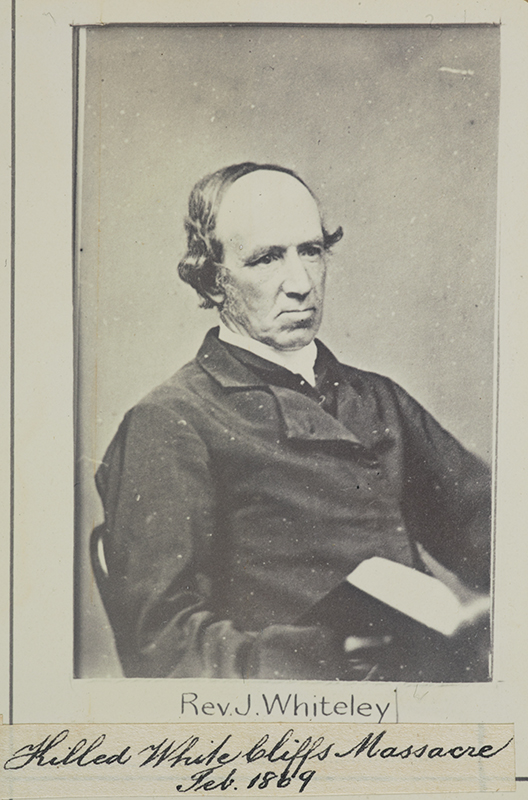
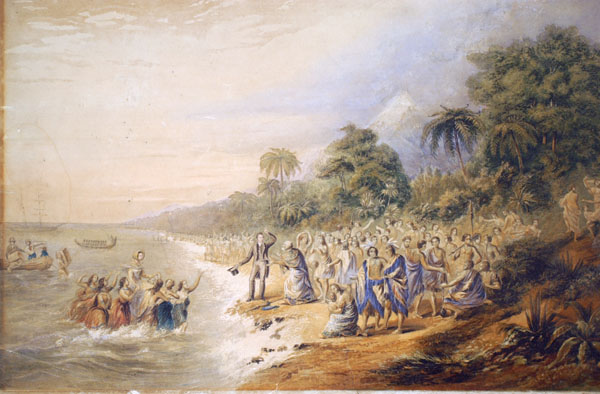
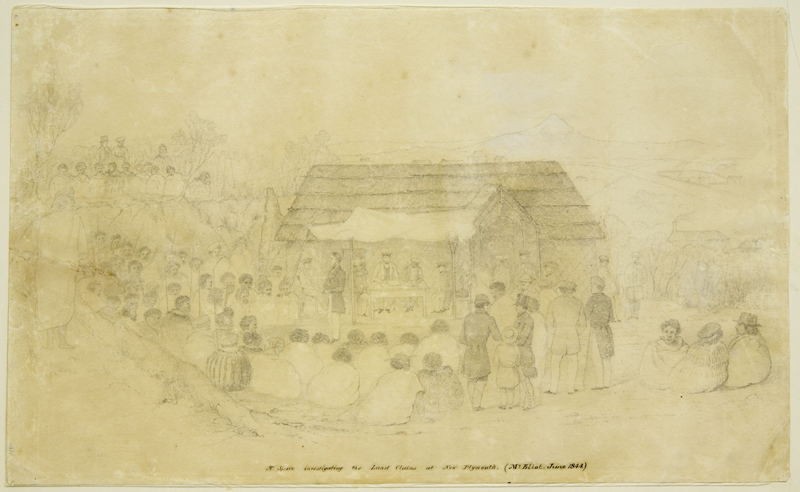
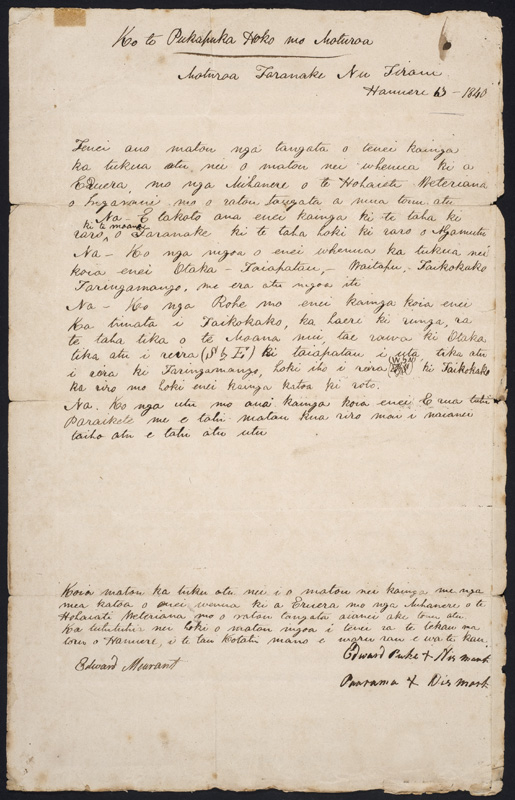
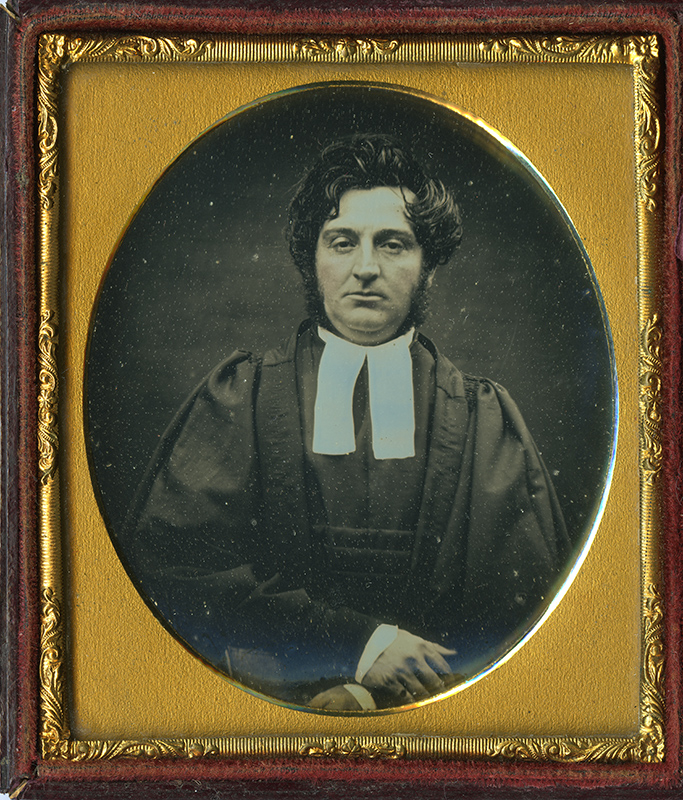
The Whiteley land has always been in dispute, from the earliest times when it was bought from Māori without full iwi permission, right through to a tricky Crown grant that has been questioned at least four times. It has been cut up, leased and the boundaries changed until the original purpose for acquiring it seems lost in the paperwork.
Trying to grasp the historic details of the Whiteley land is like putting your hand in a tub of eels. How did land that belonged to local Māori end up the legal property of the Methodist Church of New Zealand? How did land, offered as a gift for a mission station, end up a source of rental income for the church? And if the wishes of those who offered the land to the Church in good faith have been ignored in the past, should something be done to put it right today?
To understand at least the chronological order of events, it's necessary to go back to the earliest times, when the land belonged to Māori and the first missionary was yet to arrive in New Zealand.
In 1822, the Wesleyan Mission Society sent its first representative, Samuel Leigh, to set up a camp in the Bay of Islands. Over the next ten years the society grew slowly, with operations centred in the north Auckland area. But even there, local Māori captured during battle or traded to Ngāpuhi for guns fell under their religious influence.
Still, it wasn't until 1834 that the missionaries moved south. First they travelled to Kāwhia, where a mission station was set up by William and Jane Woon, and on to Whāingaroa (Raglan) where another was run by James and Mary Ann Wallis, and then John and Jane Whiteley.
Conflict between the Wesleyans and the Anglican Missionary Society caused the stations to be abandoned in 1836. After three years of argument over whose job it was to bring religion instruction to Māori, the Whiteley’s and Wallis’s returned to Raglan to continue the Lord’s work. That same year John Hobbs and John Bumby (head of the New Zealand Mission) made his way up the west coast by ship from Port Nicholson (Wellington).
At the port of Ngāmotu, both men seemed appalled by the living conditions of the small group of Te Ātiawa who had remained behind to keep claim to the land after the majority of their people trekked south to Kapiti after the Waikato invasion of 1832.
Hobbs and Bumby travelled on to the Whiteley's at Kāwhia and despatched two Māori teachers, Wiremu Nēra Te Awa-i-taia and Hohaia, to Taranaki. These two men were so good at what they did, they managed to convert people to Christianity who had had no previous contact with Europeans.
Around this time, William Wakefield, New Zealand Company agent, left the Hokianga harbour aboard the Tory, on a mission to buy land. Bumby and his fellow missionaries grew increasingly alarmed by the prospect of having to buy land, not directly from the Māori, but through the New Zealand Company. Already, ownership of land previously acquired by the Wesleyan Society could be overturned without warning.
The Tory stopped at Ngāmotu to allow Dicky Barrett - whaler, trader and interpreter - on shore, so he could negotiate land purchases with his wife's Te Ātiawa. Fate intervened and stalled the deal, when the Tory ran aground at Hokianga, delaying Wakefield's return to sign the papers.
When word reached Raglan that the New Zealand Company had bought the whole of Port Nicholson (Wellington) Whiteley sent a lay mission worker, Edward Meurant, to Ngāmotu to secure land for a mission. Though it's now thought that the land had been negotiated for earlier, it seemed clear to Whiteley that he should finalise the deal - and soon.
On 13 January 1840, a deed for 36.5 hectares (90 acres) was drawn up and signed by two Te Ātiawa members, Poharama and Edward Puke, with Meurant putting his mark on the papers for the Wesleyans. He paid a deposit of two single blankets and a few fish-hooks and promised further payment.
But the Wesleyans and the New Zealand Company were not the only ones at Ngāmotu after land. William White, the second ever Wesleyan missionary to arrive in New Zealand, suddenly declared his interest. He said the Waikato tribes, who believed they owned the land through right of conquest, had sold all of Taranaki to him. He was only prevented from obtaining signatures on the deal by the ever-vigilant Dicky Barrett, who was intent on buying the land for the New Zealand Company. Whiteley, however, entered into a deal with White to give the Wesleyan Missionaries any part of his so-called purchased land they desired for their mission.
History shows that the Wesleyans beat the New Zealand Company to the punch. The New Zealand Company was unable to formalise its land buy-up until after the Tory was re-floated, in February 1840, enabling Wakefield to travel to Ngāmotu to sign the deeds. But to be on the safe side, Wakefield too, had entered into a deal with White - though it could not finalised until further financial settlement was made.
Into this muddled buy-up, came missionary Charles Creed and his wife Eliza. In the country less than a year, they'd been stationed at Mangungu in the Hokianga on a trial basis only. With them came John Leigh Tutu, a Māori teacher who had turned to Christianity a decade before. An impressive chapel opened at Ngāmotu in September 1841, and in less than two years, there were four more chapels built on mission sites around Taranaki.
In 1841 the William Bryan arrived in Ngāmotu's rough harbour, bringing 148 new settlers to the proposed township of New Plymouth. The immigrants quickly discovered that land promised to them in England was still in dispute, as Te Ātiawa trickled home from Kapiti to find their lands sold without them.
The resulting clashes between both sides put Whiteley and Creed in the middle, trying to keep the peace. The town held its collective breathe while the Government appointed a commissioner to come and sort it all out. Creed, who had previously been well respected by local Māori, soon lost all credibility when he preached for them to be patient. By 1843 he was under threat - give up his mission house or have it burned to the ground.
When Charles Creed was posted to Taranaki in December 1840, he had yet to be admitted into full connexion. He gained that status in 1842, and found himself alone in a fledgling town, with only a flea-infested hut with no doors, windows or floor to live in. Though Mrs Creed gave birth to a son, the boy lived only two weeks.
In 1843, Creed was accused of sexual connection with a young Māori girl who lived and worked on the mission station. Soon he and his wife were banished to Dunedin - almost the ends of the earth - and neither was allowed contact with her again. Though a subsequent inquiry cleared Creed of adultery, he is still said to have descendants in Taranaki.
When Henry Hanson Turton, appointed Creed's successor in 1844, arrived in New Plymouth, he was shocked by the state of the mission and set about rebuilding it.
Turton had been in town just a few weeks when Commissioner William Spain arrived to settle the land ownership dispute. Before a large crowd, Spain handed down his decision: 24,282 hectares (60,000 acres) to the New Zealand Company, upholding their purchase, 2,428 hectares (6,000 acres) to Māori and 40.5 hectares (100 acres) to the Wesleyan Missionary Society for mission land.
Understandably, this lop-sided decision was not welcomed in all camps. It ignored the rights of absentee Te Ātiawa, those who had been taken into slavery and those who had not returned from Kapiti. In effect, it approved the injustice done at the point of the land sale and the Māori response was anger. Turton assured them they were able to appeal to the governor.
In August 1844, Governor Robert Fitzroy arrived in New Plymouth with Donald McLean, Sub-protector of Aborigines. Fitzroy announced that he did not support Spain's decision and offered further investigation into the matter. In October he returned and overturned Spain's judgement, buying 1414 hectares (3,500 acres) for the settlers and moving them closer to town.
The next drama to beset the land was the awarding of a crown grant, the details of which are, even today, very confused and confusing, full of blurred lines and lost reports. Sally MacLean explains in A History of The Ngamotu Mission and The Grey Institute Trust: "Commissioner Spain had decided to recommend a Crown grant for the Wesleyan Missionary Society by the time he presented his final report on the New Zealand Company's Taranaki claim in March 1845.
"The New Zealand Company award excluded 'all that piece of land containing one hundred acres, reserved by the Natives at the time of the sale to the New Zealand Company for the Wesleyan mission station, which said piece of land is delineated and set forth upon said plan of the district'.
"Furthermore, Spain reported that the 'Wesleyan Missionary Society is entitled to a Crown grant of the said piece of land thereinbefore described, containing one hundred acres.' The fact that this passage (from the report on the New Zealand Company's Taranaki claim) was cited in March 1850 as the official document in support of the Society's Crown grant of land at Ngamotu indicates that Spain's original report was already missing."
Though Turton, and John Whiteley, sent to New Plymouth in 1856, played an important part in preventing an outbreak of violent protest over Spain's award, Fitzroy's actions in overturning it jeopardized the plan for a Crown grant for the land.
At least one whānau had already laid claim to it - a man called Rangikapua asked to have his family's portion of it returned. The mission was subsequently awarded half of another parcel of land as compensation, but there would be conflict over this piece of dirt later.
When Rangikapua's son, Te Hape, leased the land to a settler named Loveridge for a term of 21 years, Turton grew increasingly upset. The land supplied the mission with firewood. When he asked J.T. Wicksteed, agent to the New Zealand Company, what he could do to get it back, Wicksteed said he believed Spain's original award still stood and that the Māori owner was able to sell or lease the land only to the company and not to individuals. He suggested Turton serve notice on Loveridge, recover the land and the crops and demand full compensation for any damage.
No records survive to tell us whether Turton did this or not, but the dispute showed the missionaries how bogged down the Government had got in its own judgement and the society was left to find a way to pick up the Crown grant. What happened next is anyone's guess because of serious gaps in the records, but it is known that the grant was made out to Reverend Walter Lawry, Superintendent of the Wesleyan Mission, picked up in April 1850 and was to be held by the mission “forever”.
Even so, there are real discrepancies between the Crown grant and the original document when it comes to boundaries and lines. The claimed area originally measured 36.5 hectares (90 acres) yet the grant showed it as 40.47 hectares (100 acres) with boundary lines drawn closer to town.
In 1857, the land was officially handed over to the Auckland District Mission Property Trustees, a group with no real loyalty or commitment to the Ngāmotu Mission. Afterwards, it was subdivided and leased, subdivided again and the leases auctioned off.
By 1969, with the trust barely covering administration costs, it looked at freeholding the land. After a review in 1973, work commenced towards that end, with a subcommittee appointed to organise and obtain consent from the various church bodies.
Approval came in 1978, after discussion with Māori representatives. Māori reluctantly agreed, and most sections were freeholded by the end of 1980 with 75 sections sold and another 33 about to be finalised, but Māori withdrew their consent, bringing a halt to further sales.
Today, the prime Whiteley land is still a bone of contention, with its long and convoluted history of conflict and mistrust. To many it is a sharp reminder of how far things can end up from the good point they started from, and how a well-intentioned gift can become a betrayal given time.
Brazendale, G. (1996). John Whiteley: land sovereignty and the land wars of the 19th century. Orewa: Wesley Historical Society.
Maclean, S. (1992). A History of the Ngamotu Mission and the Grey Institute Trust. New Plymouth: Grey Institute Trust.
Mullon, H.D. (1969). These Hundred Acres: The story of Whiteley Township, city of New Plymouth. New Plymouth: Herbert Mullon.
Please do not reproduce these images without permission from Puke Ariki.
Contact us for more information or you can order images online here.